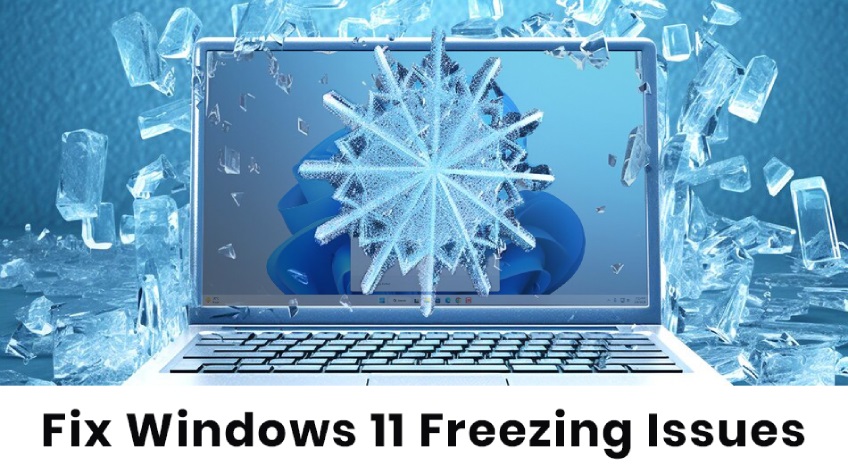
Is your Windows 10 or 11 laptop hanging or freezing frequently? Whether it’s slow response, laggy performance, or complete system freeze, these issues can seriously disrupt productivity. Fortunately, most laptop freezing problems can be fixed with simple software and hardware checks.
In this guide, we’ll walk you through step-by-step solutions to fix laptop hang and freeze issues on Windows 10/11. These fixes are beginner-friendly and you don’t need advanced tech skills to follow along.
Common Causes of Laptop Hanging in Windows
- Insufficient RAM or storage space
- Background processes consuming system resources
- Corrupted system files
- Malware or viruses
- Outdated drivers or Windows updates
- Faulty hardware (HDD, RAM, GPU)
Step-by-Step Guide to Fix a Freezing or Hanging Laptop
Step 1: Restart Your Laptop
A simple reboot can clear temporary glitches and stuck background tasks.
How to do it:
- Press
Ctrl + Alt + Delete - Click the power icon and select Restart
Step 2: Check for System Updates
Running outdated Windows versions can cause instability.
Steps:
- Go to Settings > Windows Update
- Click Check for Updates
- Install all available updates
- Restart your PC
Step 3: Free Up Disk Space
Low storage slows performance and causes freezing.
How to clean up:
- Open Settings > System > Storage
- Use Storage Sense or manually delete temporary files
- Empty Recycle Bin
Step 4: Disable Startup Programs
Too many startup apps can overload your system at boot.
To disable them:
- Press
Ctrl + Shift + Escto open Task Manager - Go to Startup tab
- Disable unnecessary apps
Step 5: Scan for Malware or Viruses
Malware can slow down your system and cause hangs.
Use Windows Defender or a trusted antivirus:
- Go to Windows Security > Virus & Threat Protection
- Click Quick Scan or Full Scan
- Remove any threats found
Step 6: Update Drivers
Outdated or corrupt drivers cause freezes, especially graphics or chipset drivers.
Steps:
- Right-click the Start button > Device Manager
- Expand Display adapters, Sound, and Network
- Right-click each device > Update driver
Step 7: Run System File Checker (SFC)
This checks and repairs corrupted system files.
To run SFC:
- Type
cmdin the Windows search bar - Right-click Command Prompt > Run as Administrator
- Type:
sfc /scannowand press Enter - Wait for the scan to complete and follow instructions
Step 8: Perform a Clean Boot
This helps identify software conflicts.
Steps:
- Type
msconfigin the search bar - Go to Services tab > Check Hide Microsoft services
- Click Disable All
- Go to Startup > Open Task Manager and disable all items
- Restart your PC
Step 9: Check RAM and HDD Health
Faulty RAM or hard drive can freeze your laptop.
- Use
Windows Memory Diagnosticto check RAM - Use
chkdskor third-party tools like CrystalDiskInfo to check HDD/SSD health
Step 10: Reset or Reinstall Windows (Last Resort)
If nothing works, a system reset may help.
Steps:
- Go to Settings > System > Recovery
- Choose Reset this PC
- Select Keep my files or Remove everything
